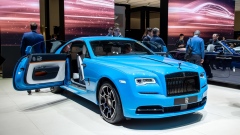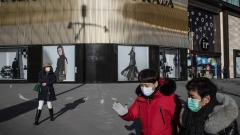Jan 14, 2022
The cost of a new car won't be dropping anytime soon
, Bloomberg News
Used car prices see highest rise amid U.S. inflation
Last year’s record-high car prices won’t be dropping soon.
In December, the average price of a new vehicle in the U.S. hit US$47,077, up 14 per cent (US$5,742), compared to 2020, and up 1.7 per cent (US$808) from the previous month, according to Kelley Blue Book. The rise came as U.S. inflation ended 2021 at sizzling levels levels—a 39-year high of 7 per cent—with gasoline topping the charts with a 49.6 per cent price increase from the prior year. The higher prices for autos, food, and apparel, among other things, reflect the pains of a reopening economy. Last year’s surge in car prices came as component shortages hit automakers just when consumer demand was soaring.
“Lack of inventory was the big story in 2021,” says Jonathan Smoke, Cox Automotive’s chief economist. “Tight supply has created strong pricing power and record profits for automakers.”
Expect this to continue into at least the first quarter, he says. “Even though we do see modest growth in supply in 2022, we do expect pricing power and profitability [for automakers] to remain favorable.”
THE COST OF LUXURY
Luxury vehicles in particular contributed to the overall pricing gains. The average price of a luxury car in December hit US$64,864, considerably higher than the US$43,072 average price paid for a new non-luxury vehicle. Last month luxury cars sold for a record-setting US$1,300 more on average than their sticker price, while in December 2020, they sold for US$3,000 less than MSRP. Chip shortages, a surge in holiday spending, and the spread of the COVID-19 omricon variant were the biggest factors in the disparity, analysts say. Affluent consumers were not discouraged.
“The luxury buyer has probably had a pretty good ride in the last couple of years,” says Charlie Chesbrough, a senior economist for Cox Automotive. “Their portfolio is probably doing well. Their income is probably doing well. That is the reason we are seeing such strength.” Indeed, the global catastrophes of the past year have served to make the rich richer.
The trend will continue, Chesbrough says. In December 2016, upscale vehicles sold by such brands as Audi, BMW, Mercedes-Benz, and Porsche made up 15.5 per cent of the U.S. market, according to KBB. Last month they accounted for 18.4 per cent. In 2012, 54 per cent of new vehicles sold had an MSRP below US$30,000, according to Cox Automotive. Today that percentage sits at 19 per cent of the market, he says: “Where the market is moving to is much higher-priced categories.”




